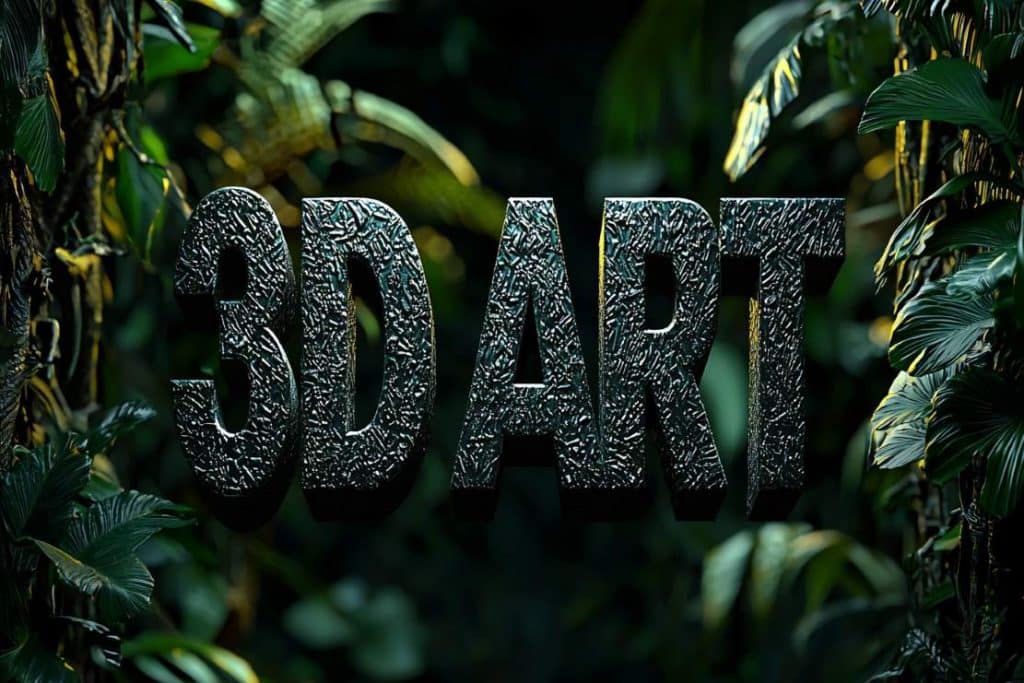What Is 3D Art? A Journey Into the World of 3 Digital Dimensions

We’ve all experienced it: that moment when a movie scene, video game, or animated ad leaves us breathless, wondering, “How did they do that?” More often than not, the answer lies in 3D art. But what exactly is 3D art, and why does it feel so different from the drawings or paintings we grew up with? Let’s pull back the curtain and explore this vibrant, ever-evolving medium—one that’s reshaping how we tell stories, sell products, and even interact with the world.
Breaking Down the Basics: What Makes 3D Art 3D?
First things first: 3D art isn’t just “art with depth.” It’s a whole new language of creativity. Unlike traditional 2D art (think sketches or watercolor paintings), 3D art exists in a digital space where objects have height, width, and depth. Imagine sculpting clay, but instead of messy hands, you’re using software to mold shapes, play with light, and build worlds that feel tangibly real—even if they only live on a screen.
Here’s the kicker: 3D art isn’t confined to fantasy. It’s everywhere. From the hyper-realistic vegetables in your favorite cooking game to the mind-bending special effects in Avatar, 3D artists are the unsung heroes behind the visuals we love. But how does it all work? Let’s unpack the process.
From Pixels to Playable Worlds: How 3D Art Comes to Life
Creating 3D art is like baking a cake. You start with raw ingredients—basic shapes called primitives (spheres, cubes, cylinders)—and layer techniques until you’ve built something mouthwatering. Here’s a simplified recipe:
Modeling: This is where artists sculpt their vision. Using software like Blender or Maya, they twist, stretch, and refine digital “clay” into characters, environments, or objects. Ever seen a low-poly model? That’s the wireframe skeleton before details like textures and lighting are added.
Texturing: Now, imagine wrapping that wireframe in wallpaper. Texturing adds color, patterns, and surface details (like rust on metal or freckles on skin). Without it, everything would look like shiny plastic.
Lighting: Light sets the mood. A poorly lit scene feels flat, but the right shadows and highlights can make a robot’s metal armor gleam or a haunted house’s corridors feel claustrophobic.
Rendering: This is the big finale. The computer calculates every pixel, shadow, and reflection to produce the final image or animation. It’s time-consuming (some scenes take days to render!) but utterly magical.
Animation (Optional): Want that dragon to flap its wings? Animators rig models with digital “bones” and create movement frame by frame—or let physics engines simulate natural motion, like flowing water.
Why 3D Art Feels So…Human
Here’s where things get interesting. Despite its digital roots, 3D art connects with us on a visceral level. Why? Because it mirrors how we experience reality. Our brains are wired to process depth, movement, and texture, so 3D visuals feel familiar, even when they’re surreal.
Take Pixar films, for instance. We cry over sentimental robots and talking toys because their expressive motions and textured surfaces—rust, fabric, scratches—trick our brains into seeing life. It’s a paradox: the more “imperfect” and tactile a 3D creation feels, the more relatable it becomes.
The Tools of the Trade: Not Just for “Tech Geniuses”
When people hear “3D modeling,” they often picture coders hunched over keyboards, typing lines of gibberish. But modern tools are surprisingly intuitive. Many artists start with free software like Blender (which rivals industry staples) or Tinkercad (perfect for beginners), building skills through tutorials and trial-and-error.
Hardware matters too. A good graphics card speeds up rendering, while a pressure-sensitive tablet lets artists “paint” textures as naturally as holding a brush. But here’s the secret: passion matters more than gear. Some of the most stunning 3D art we’ve seen was created on decade-old laptops by self-taught creators.
Where You’ve Seen 3D Art (Even If You Didn’t Realize It)
Let’s ground this in everyday life. Remember the last time you:
- Scrolled through social media: Filters that turn you into a cartoon character? 3D face tracking.
- Played a video game: Open-world landscapes, character customizations—all 3D.
- Online shopped: That couch you’re debating buying? It might be a 3D render, not a photo.
- Watched a superhero movie: Spoiler: Those explosive battle scenes? Mostly CGI.
Even healthcare and architecture rely on 3D art. Surgeons practice on digital models of organs, while architects walk clients through virtual buildings long before breaking ground.
The Dark Side: Challenges Only 3D Artists Understand
We won’t sugarcoat it—3D art is hard. The learning curve is steep, software updates feel never-ending, and technical glitches can obliterate hours of work (RIP to the unsaved file we’ve all lost). Then there’s the dreaded “uncanny valley,” where almost-real humans look…creepy. Getting facial expressions right? That’s a Herculean task.
But here’s the upside: Every artist struggles, and communities like ArtStation or Reddit’s r/3Dmodeling are full of supportive folks sharing tips, critiques, and memes about their rendering nightmares.
How to Dive Into 3D Art (Without Drowning)
Ready to try your hand at it? Start small. Follow a YouTube tutorial to model a cartoon donut—it’s the “Hello, World!” of 3D art. Embrace mistakes; that lumpy coffee cup you made? It’s proof you’re learning.
Focus on one skill at a time:
- Week 1: Learn the interface. Rotate a cube! Change its color! Victory!
- Week 2: Model something simple, like a pencil or chair.
- Week 3: Experiment with lighting. Notice how angles change the mood.
- Week 4: Dive into textures. Make that chair look wooden, not plastic.
And when frustration hits (it will), remember: Even pros started with janky models.
The Future of 3D Art: Where Pixels Meet Possibility
We’re standing at the edge of a revolution. Virtual reality (VR) and augmented reality (AR) are turning 3D art into immersive experiences—walking through digital galleries, trying on virtual clothes, or collaborating with avatars